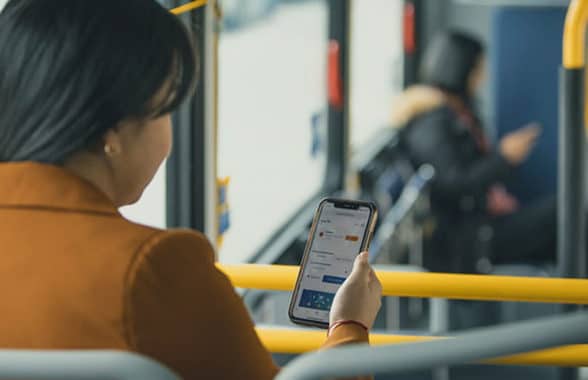
Passengers planning a journey or waiting to board a bus on the Translink network in the Metro Vancouver area of Canada can now check how many seats are likely to be available on any given bus service using a new feature on the transportation provider’s Transit app.
TransLink is trialling a Room to Ride function that uses historical passenger trends and automated passenger counter (APC) data collected from its bus network to predict the remaining capacity on a bus at a particular time and then displays that information on the app.
“When customers plan their journey through the Transit app or check the real-time location of their bus, they will now notice a symbol indicating how many seats are likely to be available on board,” Translink explains.
“Rating categories will let you know if there are usually many seats on board, some seats or standing room only on that bus at that time.
“These estimations are based on historical ridership data to provide the best possible prediction of how full the bus will be.”
“Our new capacity predictions with TransLink help riders feel confident when they get onboard,” adds Transit’s David Block-Schachter.
“This type of information also makes a huge difference if you use a wheelchair, you’re carrying luggage or you just want to feel more comfortable.”
The Room to Ride feature is available on “most routes across the region and will continue to be expanded and refined through data analysis and customer feedback,” TransLink says.
The trial on TransLink buses is due to run until May 2022.
Next: Visit the NFCW Expo to find new suppliers and solutions